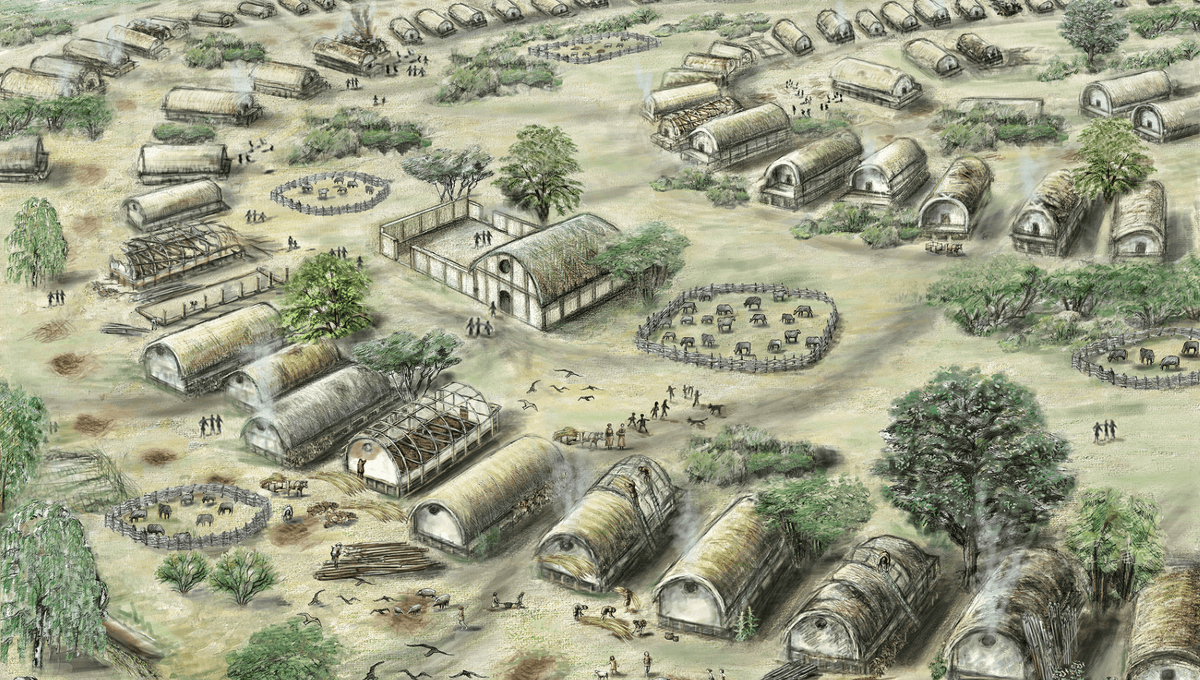
The first human megasites may have been completely egalitarian, with social equality helping to attract thousands of people to these massive prehistoric settlements. According to a new analysis, the eventual demise of this parity and the emergence of a more stratified social order might have triggered the abandonment of these ancient metropoles.
Located on the Pontic Steppe in what is now Ukraine, Moldova, and Romania, the so-called Trypillia megasites first arose roughly 6,200 years ago. Quickly ballooning in size, these Neolithic settlements expanded to cover areas of around 320 hectares (790 acres), with each site housing up to 15,000 people during the Trypillia culture’s heyday.
However, despite rising to become the largest prehistoric settlements in the world, these sites were largely uninhabited by about 5,600 years ago. To try and determine how and why the Trypillia centers flourished so spectacularly before plummeting into oblivion, the authors of a new study used Gini coefficients as a means of assessing household inequality in these ancient cities.
Often used to measure the inequality of incomes within a given society, the Gini coefficient is a well-established tool for detecting unevenness. In this case, the researchers used the method to analyze variations in the floor sizes of approximately 7,000 houses from 38 different Trypillia sites.
“Assuming that the variability in the floor size of houses reflects differences in household wealth, we can discern a decline in social inequality in Trypillia communities until at least 3800 [BCE],” write the study authors. In addition to a lack of difference in house sizes, the researchers also note that “the architecture of the houses (i.e. floor plan and construction) shows a high degree of standardization, as do the furnishing of the houses and the economic activities detectable within.”
Examining the overall design of Trypillia sites, the researchers go on to explain that the round or oval layout of these settlements “ensured equal access to structural elements and infrastructure.” Meanwhile, the presence of “multifunctional assembly houses” in public spaces indicates that the whole community may have participated in political decision-making processes.
“The development outlined here suggests that both an egalitarian ideology and effective mechanisms for avoiding social inequality must have existed within Trypillia communities,” wite the study authors. “It implies intra-settlement mechanisms for reconciling interests and redistributing surpluses that might have been established collectively,” they add.
Based on this interpretation, the researchers posit that social equality “may have been decisive for attracting, for a time, large numbers of people to these communities.” However, from about 3800 BCE onwards, the spatial arrangement of Trypillia settlements began to change, possibly reflecting a rise in inequality and the development of a social hierarchy.
It is also around this time that the Trypillia megasites begin to decrease in size as smaller communities start to appear in the surrounding countryside. According to the study authors, this may indicate that people decided to abandon the primordial cities once the egalitarian dream began to fade.
“The demise of large Trypillia settlements and the formation of smaller communities in the surrounding regions starts just when social inequality begins to increase again,” write the researchers. “Thus, the end of the aggregated Trypillia communities and mega-sites coincided with when the mechanisms of social levelling and political participation began to fail and social inequality re-emerged,” they conclude.
The study is published in the journal Antiquity.
Source Link: The World’s First Cities May Have Been Free Of Social Inequality